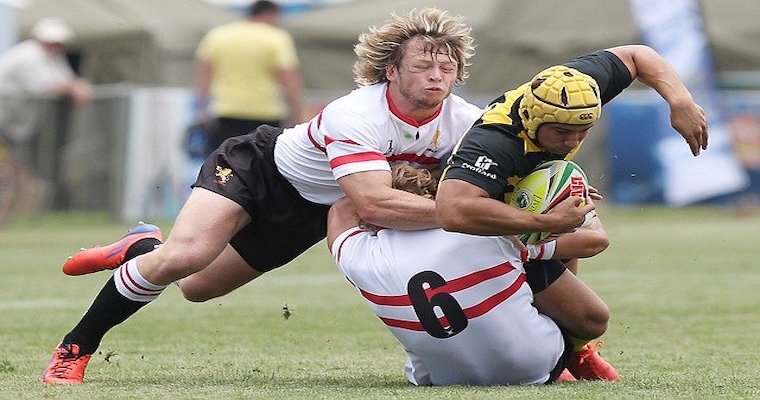
In 2000, the IRB Sevens World Series began and grows competitively to this day. Before we explore the characteristics of rugby sevens players, we need to understand the game they play. Rugby sevens is a contact sport, which means players interact and contact (e.g., tackle) each other on the field of play. Two teams contest a match played by seven players (in each team) who compete over two halves of seven minutes. Rugby sevens is most often played in a tournament set-up where teams play against each other within a group; for example, Ireland, England, Scotland and Wales would all play each other in the group.
Many rugby sevens players who play 15-a-side rugby union as backs and loose forwards and so adapt to the game of sevens because of the almost identical laws of the game. But while the games look similar and players play on the same field dimensions, playing with 6 other players differs from playing with 14 other players in your team. Sevens players spend more time running, given the space dimensions. So how do we prepare players for the demands of the game?
Alex Ross, Nicholas Gill and John Cronin examined the match analysis and player characteristics of rugby sevens. They noted several differences when preparing players for each code and the specificity of the training required to play the game optimally given the different competitions they play.
Their investigations from a systematic review of the literature showed that backs are lighter and shorter than forwards, with all players showing a lean body composition. The International rugby sevens players have similar speed characteristics to rugby union backs across distances of 10 to 30 metres. Owing to the game requirements, rugby sevens players show superior intermittent aerobic endurance. Superior intermittent aerobic endurance means players can run and recover following that run to run again. These runs mean changing from jogging to running to sprinting for relatively short distances.
Perhaps the one characteristic that stands out is the strength and power to play in rugby union compared with rugby sevens. We are yet to know about these requirements and what best suits sevens players. What’s most intriguing is that in speed and aerobic endurance characteristics of sevens players, the current research has not distinguished between backs and forwards. The developing research will examine whether differences exist between these position groups.
When we examine this research, we might guess that these findings are what we expected, but this is a common mistake because training players to meet the requirements of sevens rugby means training specifically for the demands of the game. And without the specific details, it’s easy to make assumptions when the subtleties of the data lead us in a different direction. For example, it’s likely that players will develop their training to fit the needs of sevens rugby. They will need support that is explicit and related to their position. Gaining aerobic speed endurance might trump upper body strength and power when we divide our time and resources.
Reference
Ross, R. (2014). Match analysis and player characteristics in rugby sevens. Sports Medicine (Auckland), 44(3), 357–367. https://doi.org/10.1007/s40279-013-0123-0
Image by Patrick Case from Pixabay
